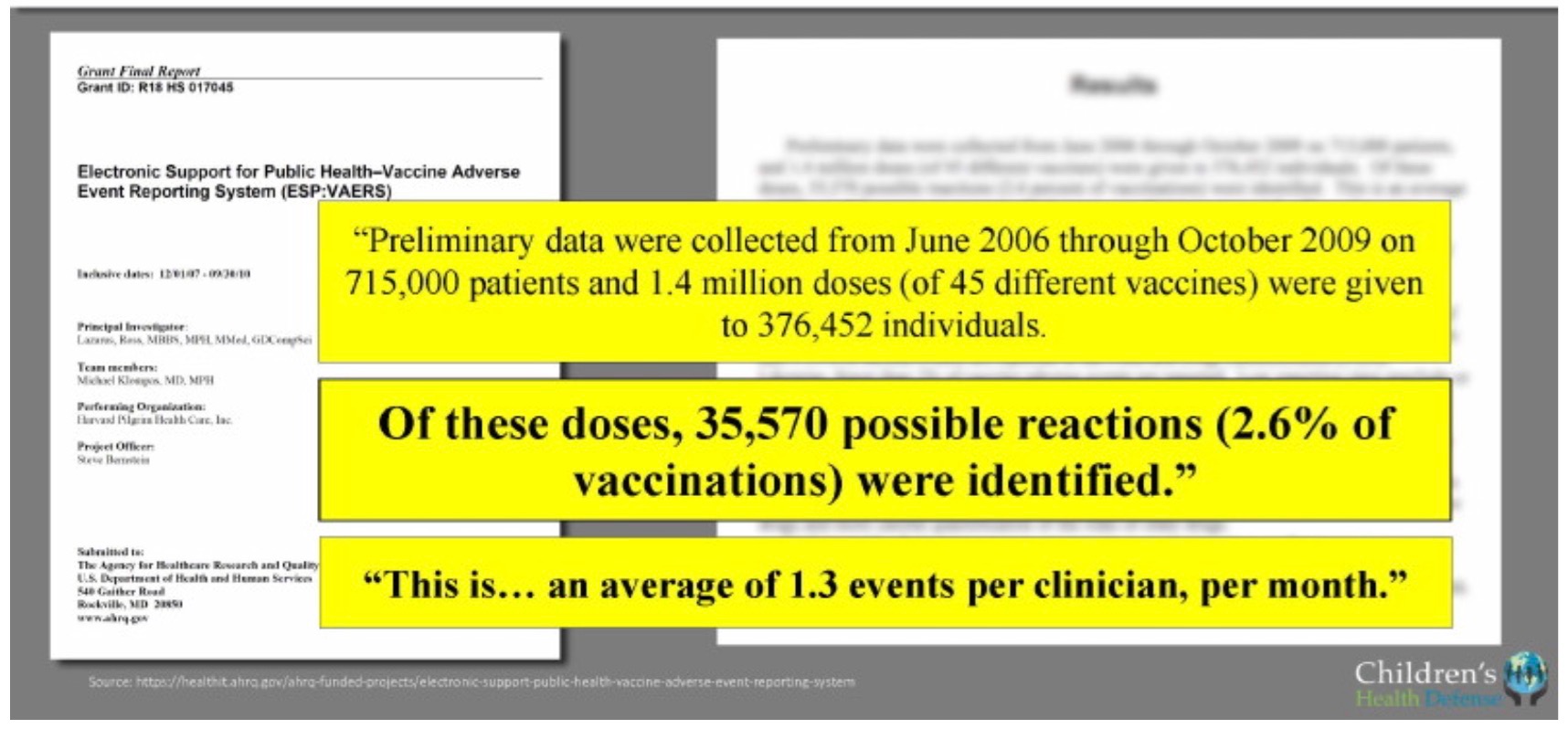True
The US Vaccine Adverse Event Reporting System (VAERS) was designed to collect all incidents of vaccine adverse events. Unfortunately it is a passive system that has not captured the true scope of vaccine injury. Most healthcare providers and parents aren’t even aware it exists. This results in inadequate tracking and means that very little knowledge about reactions to vaccines exists.
The degree of inaccuracy of the VAERS system was revealed in a million-dollar pilot study funded by the federal Agency for Healthcare Research and Quality. The study compared it with the efficacy of a state-of-the-art automated system used to analyze patient records in the Harvard Pilgrim health maintenance organization.
Done in 2007–2009, 1.4 million vaccine doses of 45 vaccines given to 376,452 individuals were evaluated. 35,570 possible reactions (2.6 percent of vaccinations) were identified—“possible” because cause and effect were beyond the study’s scope.
These data show a possible adverse reaction in 1 of 39 vaccine doses administered. The same study found that typical clinicians see 1.3 vaccine injuries per month. This is in contrast to the CDC assertion that adverse reactions occur in only one of a million doses.
The study concluded that the VAERS passive system was collecting less than 1% of the true vaccine injuries and that “New surveillance methods for drug and vaccine adverse effects are needed….” and, “Proactive, spontaneous, automated adverse event reporting imbedded within EHR (electronic health records)… has the potential to speed the identification of problems with new drugs….”
The number of adverse events may be even higher because the study followed the patients for only 30 days. Regardless a possible 2.6% of recipients may have had a reaction to one or more of the administered vaccines, without detect any effects could occur after 30 days such as autoimmune disorders.
The researchers’ subsequent proposal to automate the VAERS system was ignored by the CDC. They cut off communication with the researchers while continuing to recommend more vaccines on the childhood schedule each year.
